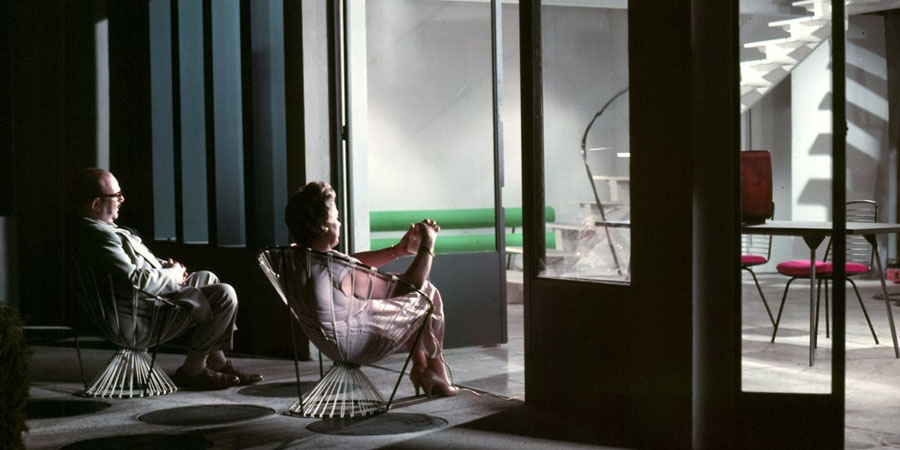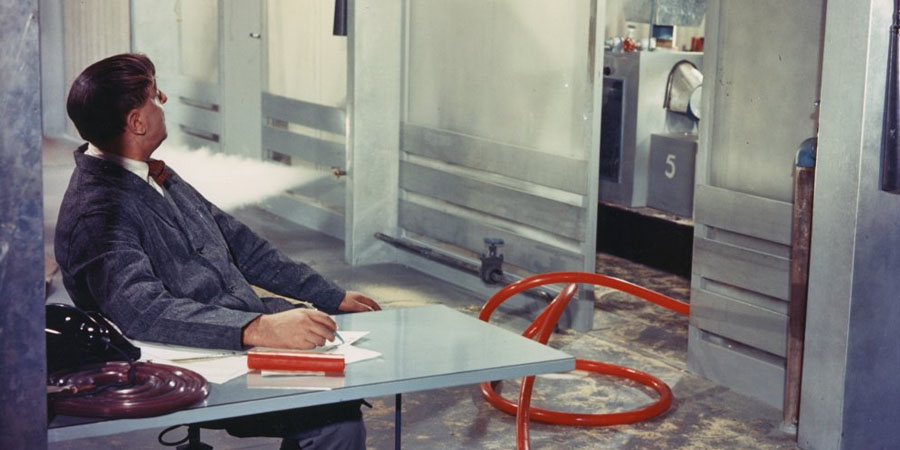“It was the same way, I’m told, that [Jacques Tati] directed performances in his films: imitate the funny way that someone walked, then ask him or her to imitate his imitation.”
Jonathan Rosenbaum
Are comedies supposed to make us laugh? Is it a shortfall if it doesn’t? If yes is the answer to those questions, then Jacques Tati provides the stellar exception to the rule. His humour is of a rare breed: one designed not to make you laugh, but to make you smile. And his slapstick is of a different sort as well: it is quiet, and it is aggregative, less an endpoint than a means towards a much grander ambition—to change the way one sees things. By rewiring things an inch awry, Tati manufactures humour less for laughter’s sake, but instead draws in, slowly but surely, a tickling sentiment that lingers on far after the film ends. No one in the real world falls over as spectacularly as Charlie Chaplin. But the people of Tati’s world are almost the people of ours – which is why, as the movie rolls, he gives us a world to live in so true to life that our perspective shifts, and the real world—now an imitation of Tati’s—becomes all the more funny.
Monsieur Hulot (played by Tati) is Mon Oncle’s titular uncle, and like other prolific slapstickers, has a modus operandi: an outfit, a look. But unlike the caricatures of Chaplin’s floppy-toed tramp, or Buster Keaton’s hard-edged deadpan, Tati’s Hulot bears a soft-edged, ordinary familiarity. He saunters with a forward lean, as if propelled by the momentum of his pipe. He sports an overworn trench-coat; a homberg; striped socks; a quiet, inconspicuous unhurriedness. And unlike his British and American peers, Hulot is not the main attraction, but merely one working part among an ensemble of characters. As such, Mon Oncle, (as well as Tati’s other flicks: the fizzy, frenetic Trafic, the humming old-town Jour de Fête, the seaside loafer M. Hulot’s Holiday, and so on) draws humour from the community of things, the collective action, and the culmination of parts—the architecture of rooms, windows, and doors; of people, children, and dogs, materializing a gentle portrait of social practice. It’s this holistic approach that so effectively grants us not simply a narrative, but a world: a world with which our world can be overlaid, compared, and fused, like two pieces of tracing paper.

Mon Oncle, on its face, holds an obvious duality between the old and the new world, mocking modernity at every turn. In the film, Hulot bridges these two realms—Hulot, who lives comfortably in his bustling, ramshackle town, is found a job in a hose factory by his brother-in-law, who lives in modernized suburbia. The literal architecture of buildings most obviously bears Tati’s old-fashioned, traditionalist leanings. Hulot’s home looks straight out of Dr. Suess—it is a huge, dilapidated house, crossed with nonsensical paths and little cavities, giving rise to a series of subtle blink-and-you’ll miss it gags as he ventures in and out of the mansion. Hulot’s sister’s new-world estate, on the other hand, is very much alien—a grey, monolithic giant; a metric cluster of right angles and vertical lines. While gags in Hulot’s home are happy, inconsequential things, the jokes his sibling faces are products of modern susceptibility. Everything that side of town is engineered for efficiency, showmanship, and disaster—the garage doors close by a motion sensor, but it’s placed outside; the kitchen is futuristically automatic, but, without instructions, it is incomprehensible; the centrepiece fountain, in the shape of a fish, has a dubious plumbing system. And so of course, it is inevitable that everything falls apart—it shatters, it splutters, it traps, it embarrasses; and everything sheens with an outward ugliness. The preposterousness of the home reflects its adult occupants: Hulot’s sister has a paradoxical air of homely pompousness; her husband is a staunchy Poirot-esque figure. It’s only their child—a small boy—who notices the empty trappings of his parents, greeting with glee his uncle Hulot’s scrappy, unconservative presence (this minor, happy relationship given titular focus).
While Hulot has his fair share of misunderstandings, his sister and brother-in-law’s desire for modernity inconveniences at every turn. The sting of irony is softened, though, at Tati’s hand—the products of the couple’s haplessness are barely criticisms; they are gags. After all, what is comedy if not the subversion of expectations? With Tati’s direction, the steady impetus with which society fumbles towards further gentrification and modernisation is not so much chilling, or dystopian, or isolating. First and foremost, it is funny. The high-pitched, meaningless tête-à-têtes between Hulot’s sister and her friends are funny. The impracticality of the furniture is funny. The way the steak is cooked is funny. The hoses in the hose factory. The children. The dogs. The traffic.
The beguiling ramblings of Mon Oncle hold a friendly but careful mirror to our world, and critically, it gazes from afar, bypassing story for atmosphere. Sound engineer Jacques Carrère gives less attention to words spoken than to the tapping of footsteps, or the swishing of fabrics. And the narrative itself, subject to wild digressions, is very simple. Tati revels in sitting back and surveying the clumsy, asymmetrical architecture of society, of interactions, and of human beings, retouching things here and there. The light-footedness with which mundanity slips into comedy and back rewards an attentive eye. To craft it would seem to require great precision—but Tati orchestrates it all, seamlessly, and then, shaking on his coat, adjusting his hat, and stepping in front of the camera, he expresses it all, effortlessly, puffing his pipe, tipping his hat to passers-by, winking at the children, greeting the dogs, and whistling all the while.
Mon Oncle is playing at Cinema Nova on 17 February. It will be co-presented with the Ian Potter Museum of Art as part of the ‘Çlement Meadmore: The art of mid-century design’ exhibition.
**********
Valerie Ng is a sort of writer based in mostly Melbourne, studying something completely unrelated to film. She’s also a managing editor for Rough Cut. Her words appear very sporadically on other sites and on @valerieing.


